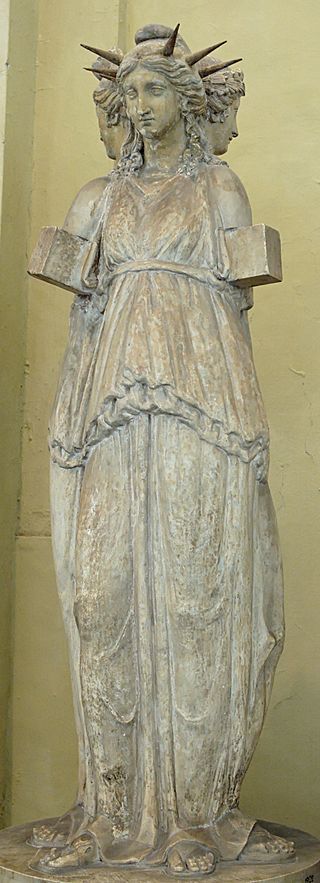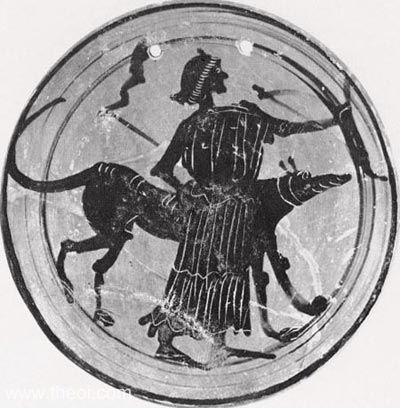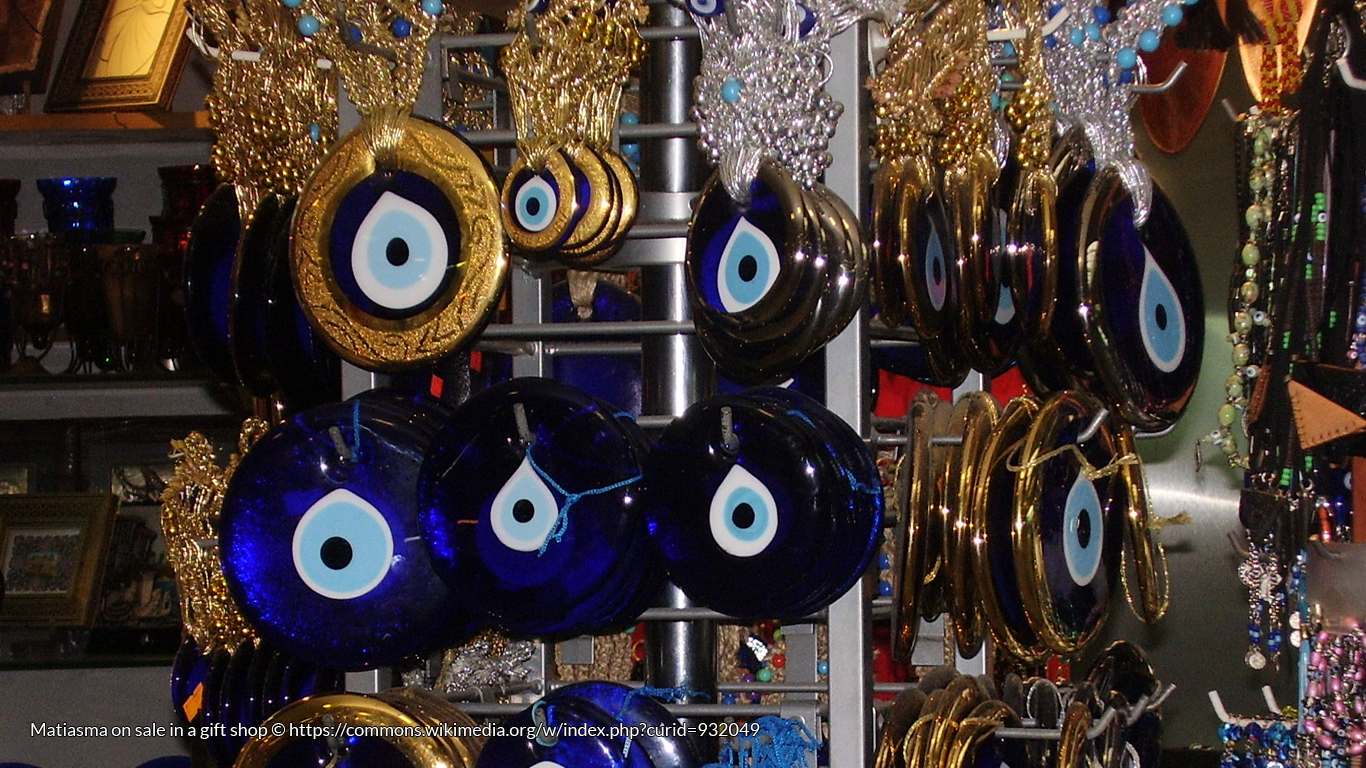Halloween is a time for witches. So who better to consider this Halloween than the goddess of all witches, Hekate?
Here, take this unbaptised brat.
Boil it well, preserve the fat.
In these lines, Hecate, the main witch of Thomas Middleton’s 1613-16 play The Witches, uses the body of an unbaptised child to make an invection ointment which will allow witches to fly and transform into succubi. Middleton’s depiction of Hekate as an evil goddess of witchcraft and the underworld is in keeping with other representations of her in the period between the 17th and 19th centuries: she is the leader of the three witches in Shakespeare’s Macbeth, and harvests the souls of dead children in Jusepe de Ribera’s Hecate: Procession to a Witches’ Sabbath (1652) (fig, 1).
Hecate, the main witch of … The Witches, uses the body of an unbaptised child to make an invection ointment which will allow witches to fly and transform into succubi.
This is the common image of Hekate: the goddess of witchcraft, of ghosts and the restless dead, frequently represented as a triple deity, and often associated with dogs, crossroads and flaming torches. But is this a fair representation of Hekate? On the surface, yes: archaeological and literary evidence for Hekate as a malign and threatening goddess goes as far back as the 5th century BC. But like all things, it’s more complicated than that. A brief examination at her history in ancient Greece reveals a much more complex figure.
Who is Hekate, what is she?
Although she is predominantly known as a Greek goddess, it is likely that Hekate’s origins can be found elsewhere, most probably in Caria, Asia Minor, from where she travelled into mainland Greece during the Archaic period (c.800-479 BC). The picture of Hekate that emerges from the sources of the Archaic period seems, at first glance, to present a very different picture of her from the goddess of magic and sorcery we are perhaps more familiar with.
Her first appearance in literature is in Hesiod’s Theogony (c.700 BC), where she is described as a Titan, one of the generation of gods before the Olympians and against whom they rebelled. Despite this, Hesiod states that Zeus honoured her above others, and she received her share of honour in the sea, sky and the heavens:
“… Hecate whom Zeus the son of Cronos honored above all. He gave her splendid gifts, to have a share of the earth and the unfruitful sea. She received honor also in starry heaven, and is honored exceedingly by the deathless gods. For to this day, whenever any one of men on earth offers rich sacrifices and prays for favor according to custom, he calls upon Hecate”.
This Hekate bears little resemblance to the more widely known chthonic goddess; here she is a powerful older deity who acts as an intermediary between the old gods, the Titans, and the new Olympians, as well as between humans and gods. In this she benefits all kinds of worshippers, including mothers, kings and fishermen.
In the slightly later ‘Homeric Hymn to Demeter’, dated to c. 650-550BC on stylistic grounds, she is still presented as a benign goddess overall. In this hymn, she is witness to the abduction of Persephone by Hades (“Only tender-hearted Hecate, bright-coiffed, the daughter of Persaeus, heard the girl from her cave”), and at the end of the poem is named as Persephone’s companion and attendant as she travels between the upper and lower worlds. But it is here that we can begin to see Hekate’s association with the otherworld and the dead, as well as with liminal spaces and transitions.
[Hecate] is pre-eminently a chthonic goddess of ghosts and magic.
The oldest known statue of Hekate dates to the late 6th century and comes from Athens. A small (20cm) terracotta votive statuette depicts Hekate as a seated, crowned woman, and is inscribed with the words ΑΙΓΟΝ ΑΝΑΘΕΚΕΝ ΘΕΚΑΤΕΙ (‘Aigon dedicates this to Hekate’). While we can’t infer much from this about how she worshipped or the features of her cult at this time, it does at least show that she was the object of offerings and dedications at this point in time.
In other Archaic representations she often accompanies Persephone, Demeter or Hermes, holding two torches and wearing a peplos, and shown in her liminal role, during transitional periods in people’s lives – to either guiding the goddess Thetis into the world of mortals at her wedding or guiding Persephone between the living and the god (fig. 2).

By the Classical and Hellenistic periods this role as guide and protector takes on a more sinister note, and by the end of the 5th century she has evolved into a character more familiar to her modern-day conception. Here she is pre-eminently a chthonic goddess of ghosts and magic. Classical Hekate, the patroness of witches and sorcerers, haunted crossroads at night, accompanied by her hellhounds and armed with torches, preying on unwary travellers.
Hekate, the patroness of witches and sorcerers, haunted crossroads at night, accompanied by her hellhounds and armed with torches, preying on unwary travellers.
This change in her conception can be seen in artistic representations. After c.430 BC, we see much less of Hekate as a torch-bearing maiden; instead she becomes the more familiar triple-bodied goddess, represented in statues known as Hekataia (fig. 3). This triple nature most probably derived from her role as Goddess of the crossroads, which in ancient Greece was a meeting of three ways (triodoi).

Hekataia were set up close to city gates or at the entrances of sanctuaries, as well as at triodoi to seek her protection, as each of the three Hekates could oversee a different road, and therefore both controlled and oversaw everything that happened there. Crossroads (along with gateways and entrances) were thresholds – in common with Hekate’s role as a goddess of liminality or transition. A threshold is neither inside nor outside of the house; a city gate belongs to neither the city nor the country; and the crossroads are the junctions of three roads but belong to none of them. They were also dangerous, home to thieves and prostitutes but also more spectral elements. The spirits of the dead were believed to occasionally remain on earth, often as a result of dying violently or prematurely, or because the rituals to convey them to the Underworld had not been properly carried out. They were believed to gather at liminal places, such as crossroads. As such, they fell under Hekate’s domain.
Suppers (known as deipna) were left for Hekate at the crossroads, particularly on the night of the new moon. These were given in order to pacify and appease Hekate and the restless dead who followed her
Suppers (known as deipna) were left for Hekate at the crossroads, particularly on the night of the new moon. These were given in order to pacify and appease Hekate and the restless dead who followed her, and included bread, garlic, cheese, and cakes lit with miniature torches. They were used as preventative measure by people to protect their homes and families against evil spirits. Deipna was so deeply rooted in society that the Christian Church found it very difficult to curtail, with records indicating that it was still occurring in the eleventh century AD, and possibly even later.
Hekate was also commonly associated with dogs, which were often sacrificed to her at crossroads; both Hekate and dogs guarded doors and gateways and protected those inside. However, dog sacrifices were uncommon in ancient Greece, being viewed as unclean; Plutarch states that their unclean nature means they are never sacrificed to the Olympian gods. However, Hekate was not an Olympian, and therefore such sacrifices were suitable for her (fig. 4).

These elements led to Hekate’s association with magic, which often relied on the cooperation of the ghosts whom she controlled, and from there to witches and sorcerers, who were also supposed to congregate at crossroads. In literary representations from the 5th century onwards, it is this element that dominates. As such, the majority of Classical and later literary depictions of Hekate emphasize these uncanny aspects of Hekate, such as Sophocles’ Rhizotomoi, where she is invoked by Thessalian women as they gather herbs for magic. Most famously, in Euripides Medea, Hekate appears as the eponymous sorceress’ patron deity, and the popularity and longevity of this play has perhaps done more than any other source to solidify the association between Hekate and witches. However, this relationship between Hekate and the dark arts is also shown in curse tablets, beginning in the 5th century, in which Hekate, alongside Persephone and Hermes, is commonly invoked to rouse the spirits of the dead into action on behalf of the living. But here again, it is her role as one who can move between realms and cross thresholds which is being called on.
These elements led to Hekate’s association with magic, which often relied on the cooperation of the ghosts whom she controlled, and from there to witches and sorcerers, who were also supposed to congregate at crossroads.
Hekate is a complex goddess, and this article only begins to cover her myriad roles and functions. But a picture of how she moves from ‘tender-hearted Hecate’ to sinister goddess of dark magic begins to emerge. Hekate’s position as a goddess of thresholds, transitions and liminal spaces inevitably led her to be related to the more sinister elements of these realms – crossroads are liminal spaces par excellence, but also spaces related to ghosts and the restless spirits. Dogs, creatures otherwise considered unclean, were sacrificed to her, and we hear of bands of howling dogs following Hekate on her nightly prowls, or heralding her arrival. These dogs were imagined to be souls of the dead, therefore amalgamating several elements of Hekate’s crossroads associations into one. The popularity of Hekate’s crossroads shrines led to the creation of a Hekate who is, on the surface, more sinister.
… this relationship between Hekate and the dark arts is also shown in curse tablets, beginning in the 5th century, in which Hekate, alongside Persephone and Hermes, is commonly invoked to rouse the spirits of the dead into action on behalf of the living.
Similarly, her role as a guardian who brings Persephone back up to earth in Archaic literature becomes a more straightforward association with the route to the underworld and passage between the living and the dead. This closer association with death and the dead, coupled with the association of ghosts, leads to Hekate’s new and darker character.
Despite this, Hekate’s original function as a goddess who benefits society was maintained into the classical period – her dread aspects notwithstanding, which were most prominently highlighted in literature of the time, her role was to protect and to guide people. Rather than ‘goddess of witchcraft’, perhaps a more appropriate title would be ‘goddess of transitions’. But over time – and aided by literary representations which can never resist a good tale – these benign elements to her character and worship have fallen away, leaving us simply with ‘the dreaded name of Hecate’ (Spenser, The Faerie Queene I.43)
Recommended books from #FolkloreThursday
References and further reading
Johnston, Sarah Iles. 1990. Hekate Soteira: A Study of Hekate’s Role in the Chaldean Oracles and Related Literature. Atlanta: Scholars Press
Johnston, Sarah Iles. 1991. ‘Crossroads’, Zeitschrift fur Papyrologie und Epigraphik. 8:217-224
Johnston, Sarah Iles. 1999. Restless Dead: Encounters Between the Living and the Dead in Ancient Greece. Berkeley: University of California Press
Marquardt, Patricia A. 1981. ‘A Portrait of Hecate’, The American Journal of Philology 102:3, 243-60
Ronan, Stephen (ed.) 1992. The Goddess Hekate. Hastings: Chthonios












